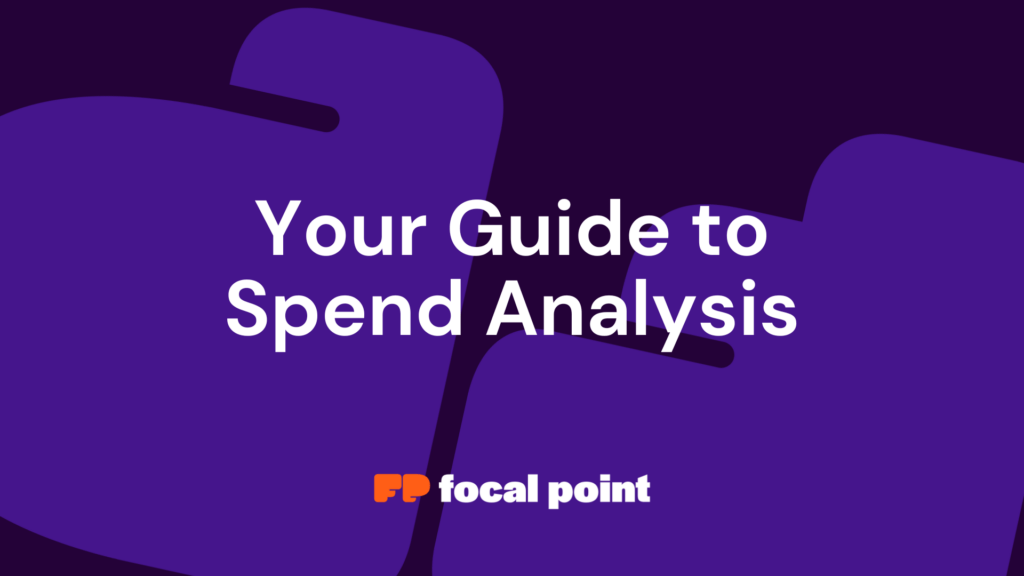What is Spend Analysis in Procurement?
Managing operational spend and optimizing the procurement process has long been a concern for procurement practitioners and are vital to the success of their organizations. Historically, spend analysis has been a taxing manual process that delivers little results. But, as more advanced business intelligence tools become available and enterprises strive to go beyond cost reductions, procurement teams are expected to drive value beyond savings. In this comprehensive guide, we will explore the concept of spend analysis, its benefits, and how it can revolutionize your procurement process.
Understanding Spend Analysis
Spend analysis is the process of collecting and analyzing procurement spend data to identify opportunities for cost reduction, increase efficiency, and generate value beyond bottom-line savings. By analyzing organized data through spend analytics, organizations can glean meaningful, relevant insights designed to move business goals forward. Conventional spend analysis mechanisms are often time-consuming and inefficient. However, with the advent of digital transformation, organizations can embrace the use of spend analysis software for more thorough and efficient analysis.
Performing a Rigorous Spend Analysis: 8 Steps to Success
Organizations should approach spend analysis through these 8 simple steps to ensure a thorough and accurate process.
Step 1: Define Your Spend Analysis Goals
Before diving into the analysis, it is critical to define exactly what business problem you aim to solve. Defining a clear goal will help you choose the right data, identify relevant data patterns and make meaningful changes. Objectives include improving business process efficiency, capitalizing on savings opportunities, and improving the supply chain and gaining higher value through diligent supplier management.
Step 2: Identify Data Sources & Consolidate Spend Analysis Data
Ultimately, the quality of your analysis relies on the quality of your data and how well it is organized. Identify data sources across all departments of your organization. Restricting yourself to data from a single team may limit the scope of your analysis. Don’t forget to include data from accounts payable and receivables, general ledger, and even external data from suppliers. Once you’ve identified where your data is coming from, it’s necessary to rationalize it so that you can begin to analyze. Consolidating spend data can be daunting, especially when dealing with data spread across different languages, currencies and locations. An AI-powered platform that looks for similarities and duplications within your data sets makes this tedious process much more manageable.
Step 3: Clean and Standardize Data
Accurate data is crucial for meaningful insights. Review your data thoroughly for any errors and correct them. Organize and standardize the data to ensure consistency and better analysis outcomes. This step sets the foundation for reliable spend analysis.
Step 4: Chose Your Category Strategy
Categorizing your spend data using a standardized category system or company-specific categories is essential for effective spend management visibility. A robust category strategy enables sustainable cost reduction and better decision-making. Utilize industry standards such as UNSPSC or create your own customized categories based on your organization’s needs.
Step 7: Analyze, Analyze, Analyze
Leverage spend analysis tools to analyze your data according to your objectives. Measure your spending data against key performance indicators (KPIs) to understand your organization’s performance. By visualizing the data through charts, graphs, and heatmaps, you can identify trends, outliers, and potential areas for improvement.
Step 8: Repeat Regularly
Spend data is constantly evolving, making regular spend analysis essential. By conducting thorough and regular spend analysis, organizations can capitalize on every savings opportunity and continuously improve their procurement process. Lean into the flexibility that business intelligence tools provide to be able to analyze your data more frequently through automation. Stay proactive and adapt to changing trends and market dynamics.
Key Performance Indicators (KPIs) for Spend Analysis
Analyzing spend data requires the measurement of key performance indicators (KPIs) relevant to your organization’s objectives. Here are some common KPIs for spend analysis:
- Maverick Spending: Otherwise known as rogue spending, this is the percentage of purchases that are made outside the organization’s procurement policy. Full visibility over unauthorized purchases can help organizations realize significant savings.
- Requisition-to-Order Time: Requisition-to-Order Time tracks the average period between requisition submission and purchase order issuance and can be indicative of inefficiencies in your procurement process. Longer requisition-to-order time indicates potential inefficiencies in the procurement process.
- Compliance Through Pre-Approved Spend: Track the percentage of spend that is approved before an order is made. Higher pre-approved spend results indicated higher compliance and results in more efficient bookkeeping and financial processes.
Best Practices in Spend Analysis
To make the most of spend analysis, organizations should adopt the following best practices:
- Make spend analysis a regular part of your reporting process to stay proactive and identify new cost-saving opportunities. Aim to do a full analysis at least once per quarter.
- Regularly review existing spend management strategies to ensure alignment with business objectives. Leave room for strategies to evolve should organization-wide priorities change.
- Monitor vendor efficiency and performance to drive continuous improvement.
- Develop a comprehensive classification strategy to categorize spend data accurately and granularly and stick to it.
- Eliminate as many organizational silos as possible to ensure a comprehensive analysis.
Revolutionize Your Procurement Process with Spend Analysis Software
Spend analysis can be a complex task, but with the right tools and technology, it becomes a powerful asset for organizations. Advanced spend analytics software like Focal Point enables organizations to automate the data management, cleansing, and analysis processes. With smart insights, vendor performance tracking, customizable reports, and a user-friendly interface, organizations can unleash the full potential of their spend data.
Spend analysis is a game-changer for organizations looking to optimize their procurement processes, drive cost reduction, and enhance supplier management. By following the steps outlined in this guide and leveraging the power of spend analysis software, organizations can unlock actionable insights, improve decision-making, and achieve significant improvements in their procurement performance. Embrace the revolution in procurement with spend analysis and propel your organization toward success.



